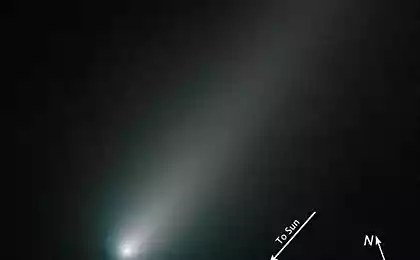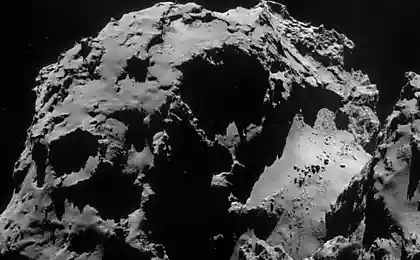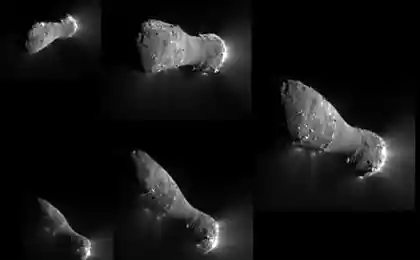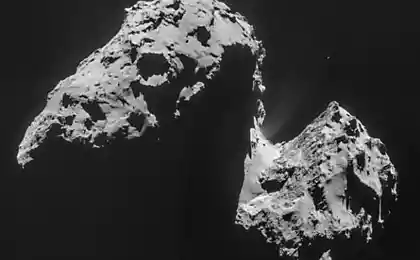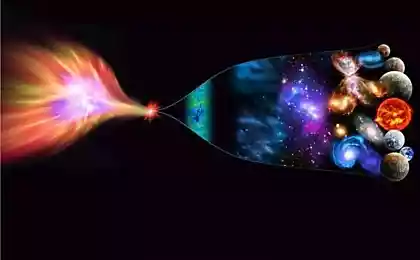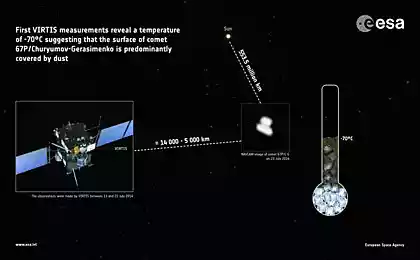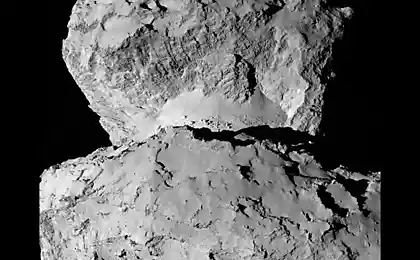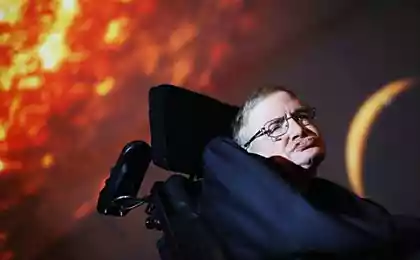811
Comets and meteorites eyes of scientists and artists of past centuries
What thought of celestial bodies people from the distant past? B>
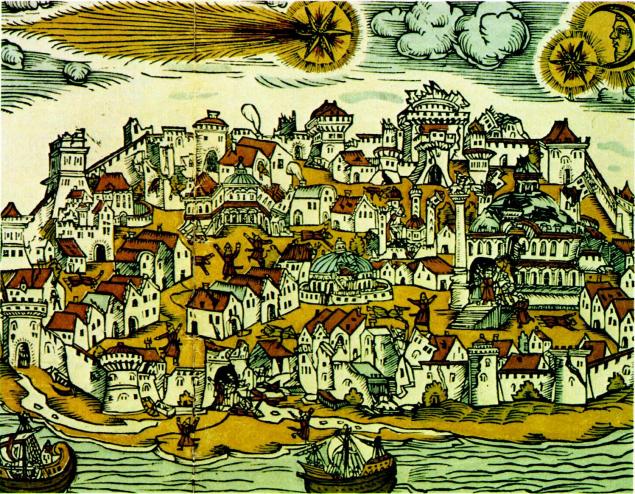
comet and an earthquake in Istanbul (1556)
Since ancient times, people observed the sky and, of course, noticed the unusual bright objects that moved across the sky at high speed. Scholars of ancient Greece tried to find a logical explanation for what is happening. In the 4th century BC Greek scholar Aristotle thought that a comet - it is inflammation of the air. Such ignition occur due to non-uniformity of air surrounding our planet, causing flammable inclusion sometimes light up. According to him, he reigned perfect order and harmony in the sky. This sudden and accidental phenomenon, like a comet, could not be part of the sky. Aristotle believed the Milky Way and the product of heating the air stars.
This view was rejected by other ancient Greek scientists. The Pythagoreans believed that the comet - a kind of planets. Hippocrates of Chios claimed that the comet was initially no tail, it appears only after a long walk in space. But Seneca was already close to an understanding of what constitutes a comet. He wrote that the comets move in elliptical orbits, and see the comet can only be at the lowest point of this orbit. Seneca believed that some comets return with a period of about 70 years. "I can not accept that a comet - it is only lit the fire; rather, it is one of the eternal works of nature ... The comet has its own place between the heavenly bodies ... she describes his path and does not go out, but only removed. We will not be surprised that the laws of motion of comets is still not solved; the time will come when the hard work will reveal the hidden truth right now ... "- Seneca wrote
. There were also other opinions. Anaxagoras believed that the sun, moon and stars - it is off the ground rock. His opinion was confirmed while falling meteorites on the ground. In Northern Greece on the ground between the 468 th and 466 BC large meteorite fell (the size of a cart, in the description of eyewitnesses). It was a stony meteorite, which is considered proof of the point of view of Anaxagoras.
Ancient Greek scientists were virtually the only supporters of the description of comets and meteorites as a natural phenomenon for a long period of time. And before them, and after the cosmic bodies were considered mystical objects. Someone estimated the comet flyby, as a manifestation of the will of God, someone - a harbinger of future troubles. And because of the epidemic and the war at that time were of frequent occurrence, and the appearance of comets is associated with them.
In addition to Greek scholars of the movement of comets in the sky and watched the Chinese. They began observing a very long time. The first in the history of comets description is written evidence of the Chinese, established in 2296 BC Space Chinese scientists presented differently than the Greeks. According to the Chinese, the universe - a vast empire, whose head is the sun. Our world - is the emperor. Planets and bright stars - it's rulers, to give an indication of comets. Last played the role of couriers, scurrying around the space and passing the necessary posts. The Chinese believed comets positive phenomenon.
Later, the comet was seen as a harbinger of the death of kings and their heirs. For example, after the assassination of Julius Caesar bright comet appeared in the sky. Comets appeared in the time of death (or shortly before / after) Ivan the Terrible, Constantine the Great, Pope Urban IV. Comets brings real horror in many medieval rulers.
In medieval paintings, tapestries, murals, manuscripts and prints in the comet repeatedly portrayed. Some artists have depicted the comet very accurately, without any "axes, knives, swords dipped in blood." As an example, one of the first images of comets can lead tapestry Bains, the most famous work of the Norman conquest of England period (1066). Tapestry was created in 1070. Here you can see Halley's Comet depicted on the head of King Harold II. Comet then considered a harbinger of impending disaster. King probably had to go through many sleepless nights, as the comet appeared April 24, 1066, after only 4 months after his coronation.
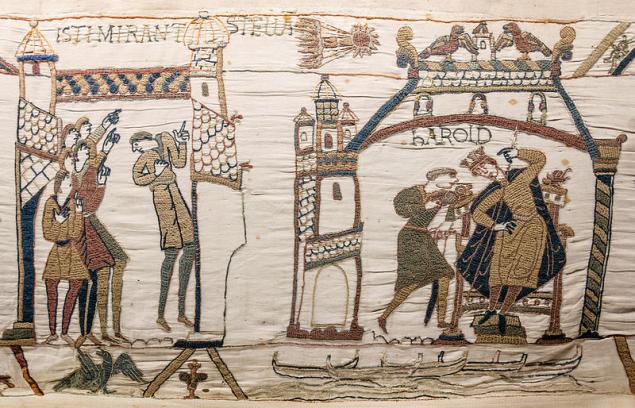
Bayeux Tapestry. We see how people point to the comet
As for the Slavs, the first time information about comets appeared in "The Tale of Bygone Years". In Kievan Rus comet also considered Harbingers of different problems - war, pestilence, and other disasters. Interestingly, in ancient comet considered moving tailed stars. In the annals of the comet's description got in 1066. This celestial body wrote: "The great star; Star privelikim, lutse imushi aky bloody, with vskhodyaschi solnetsnom pm entry; star image kopiinyi; star ... ispuschayusche beam eyuzhe prozyvahu
blistannitsyu. "
Nuremberg Chronicles, 1493
They were afraid of comets and the common people. Thus, the French surgeon Ambroise Paré described the comet that appeared in 1528: "This comet was so horrible and terrible, and gave rise to great confusion among the people so that some die from fear alone, while others fell ill. It was a huge shining length and color of blood; in the top of it was visible clenched hand holding a long sword, as if ready to strike. At the end of his blade could be seen three stars. On both sides of the beam emerging from the tail of the comet could be seen a lot of axes, knives, swords dipped in blood, and among them were seen terrible human faces with beards and unkempt hair standing on end. »

Augsburger Wunderzeichenbuch, 1552.
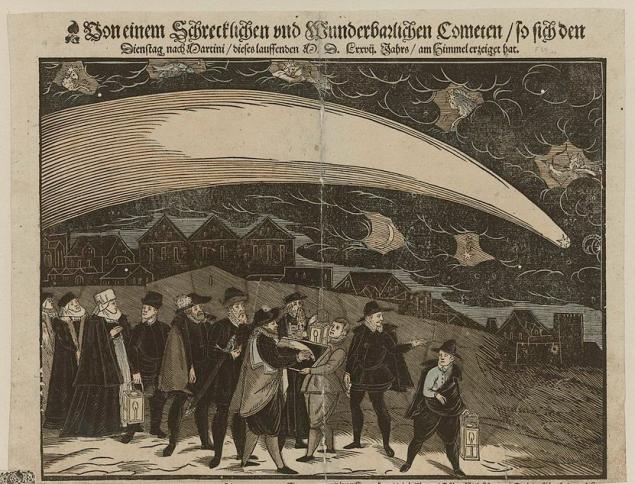
appearance of a comet in 1577, Georgium Jacobum von Datschitz

Image Terrible comet, Les oeuvres d'Ambroise Paré, 1579
Famous medieval physician and alchemist Paracelsus concurrently claimed that comets are the messengers of angels announces death.
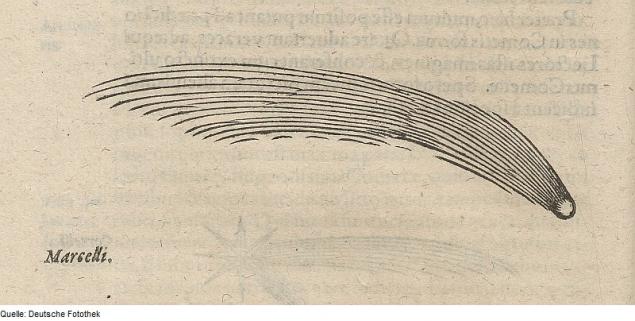
comet image of "Astronomie & amp; Komet ", 1580
But in the 16th century, scientists do comets. Tycho Brahe and some other astronomers realized that a comet - it is not atmospheric phenomenon and not the hand of god. In fact, comets are out of the atmosphere and much farther than the moon.
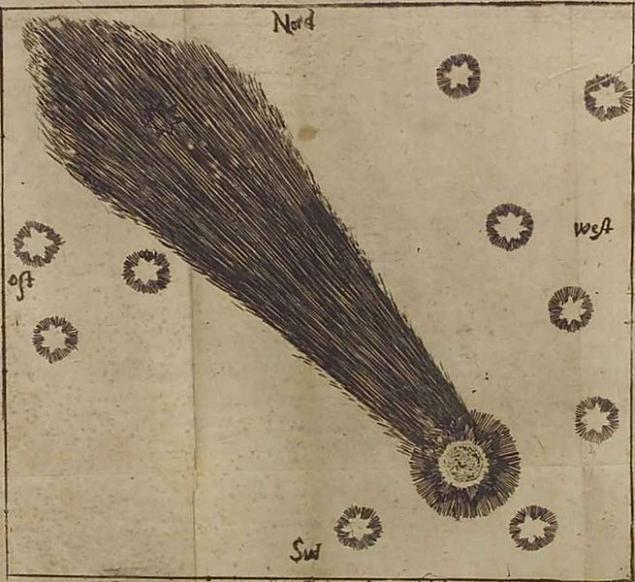
Detailed image of a comet, 1665
In the 80s of the 17th century, the comet began to study more carefully. The study of comets in recent history put Edmond Halley. He first set the frequency of occurrence of one of the comet that appeared in 1680, and calculated its orbit with the help of Newton.
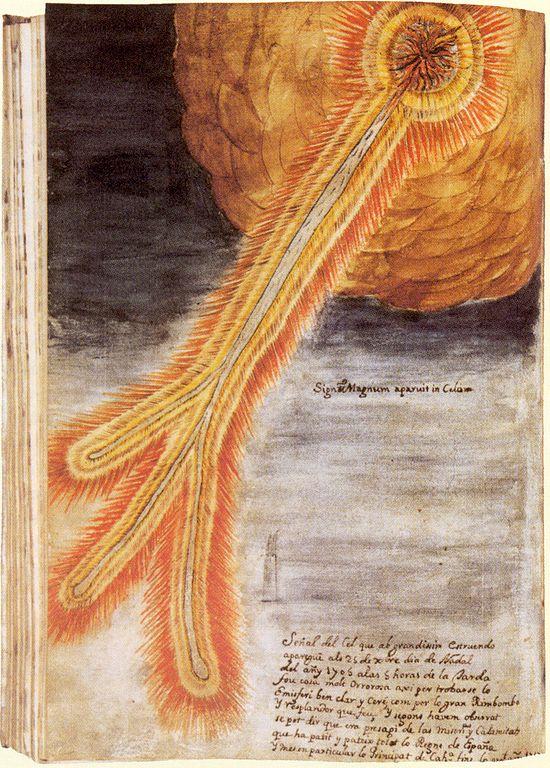
Comet over Catalonia, 1704
After the first comet Halley made for calculating the orbits of 24 comets yet. These comets have been listed in the first catalog of the orbits of comets appeared in 1531, 1607 and 1682, respectively. After the scientist calculated the parameters of the orbits of comets, he found that there are similar characteristics of a comet, and decided that it was not three but one comet that appears at intervals of 75, 5 years. This heavenly body and was named Halley's comet. After Newton and Halley, as well as the work of other scientists, the comet ceased to be a mystery, and were the subject of the study of science.
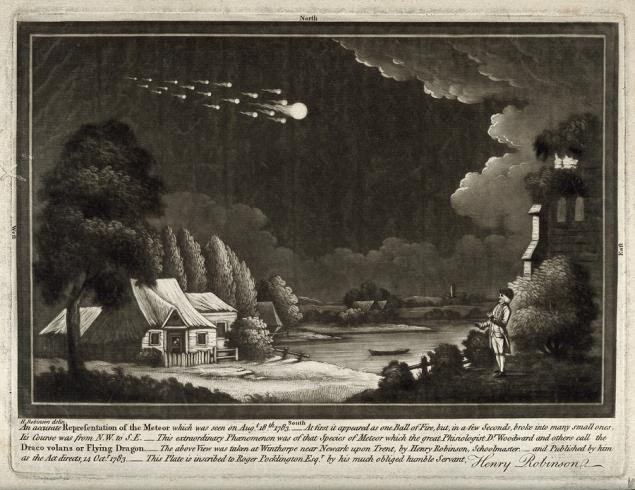
Meteor rain in the night sky, 1783

Izobazhenie comet (Thomas Cornell, 1789)

J.J. Grandville's Un Autre Monde (1844)
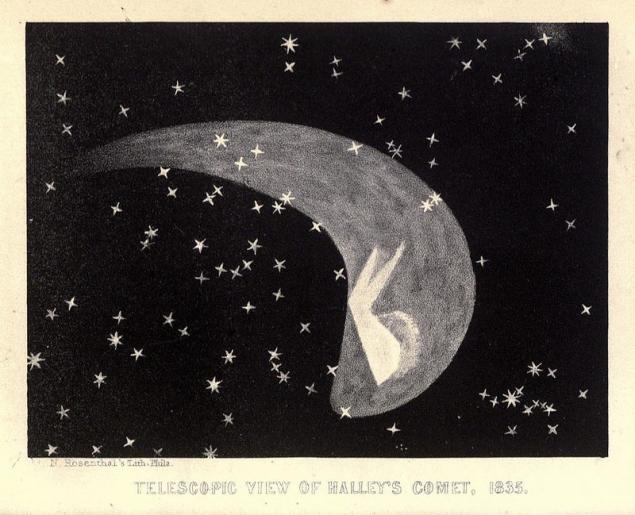
The theory of tails of comets and forms created in the late XIX century Russian scientist Fyodor Bredikhin. He has developed and classification of comet tails, which is used in modern astronomy. Bredikhin proposed to refer the tails of comets to the main three types: straight and narrow, aimed directly from the sun; wide and slightly Curved, deviating from the Sun; short, strong uklonёnnye from the central luminary.
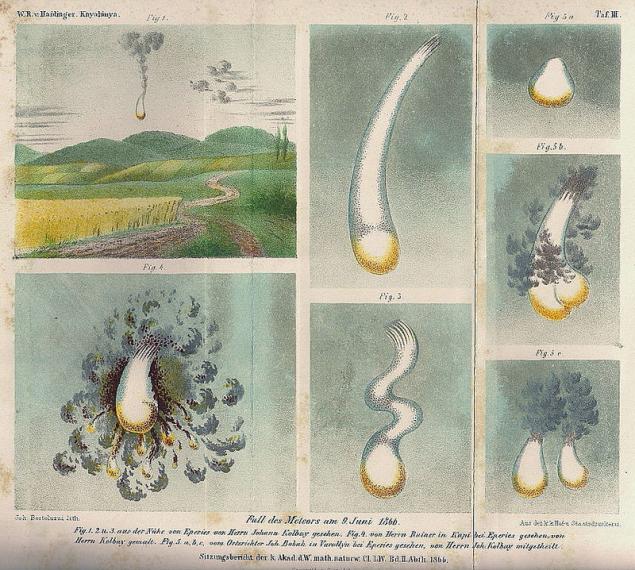 Image
Image
falling meteorite (Ukraine 1866)
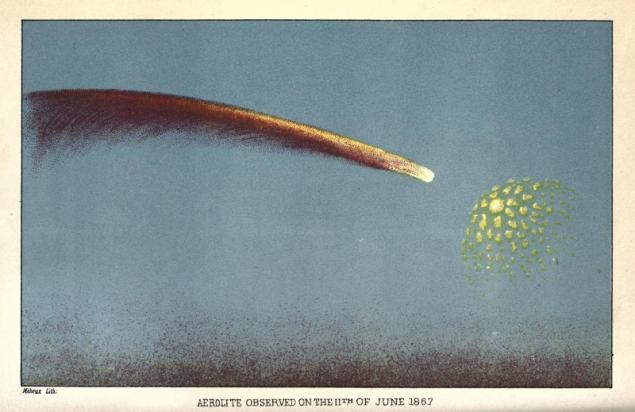
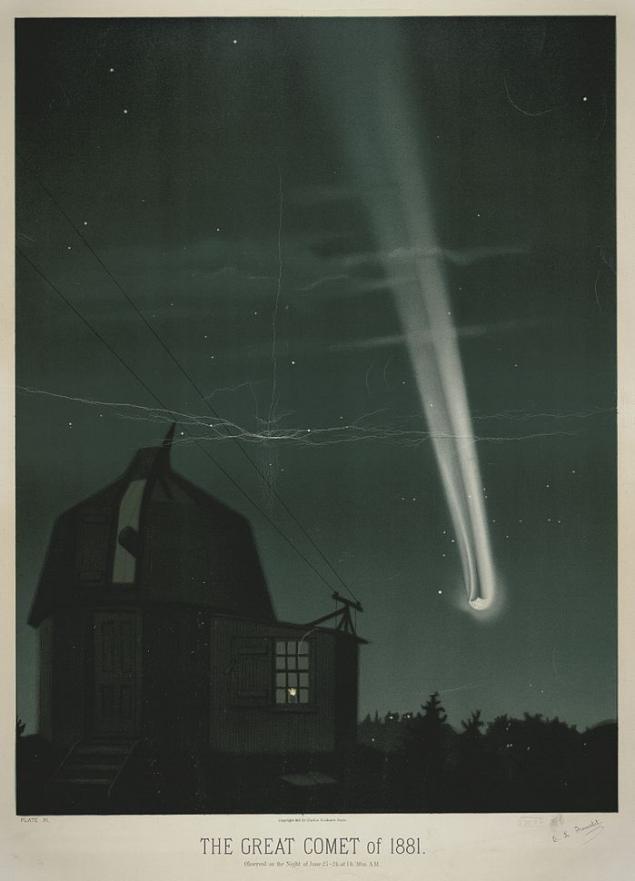
Comet C / 1881 K1, 1881
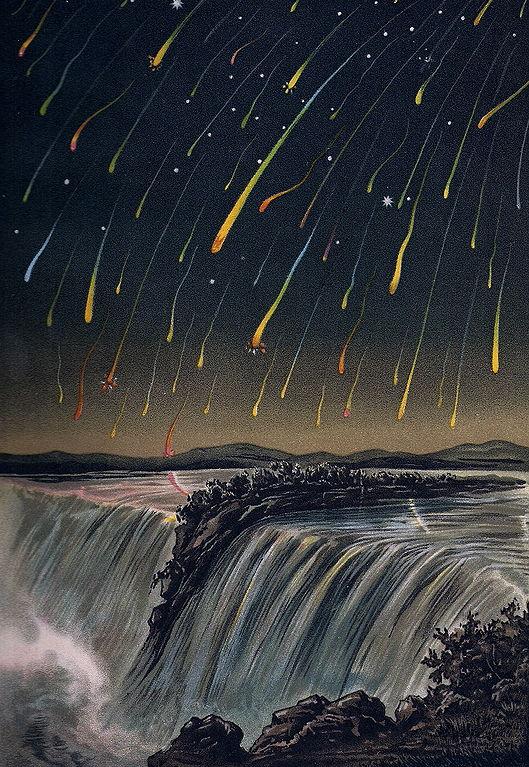
Leonids 1833
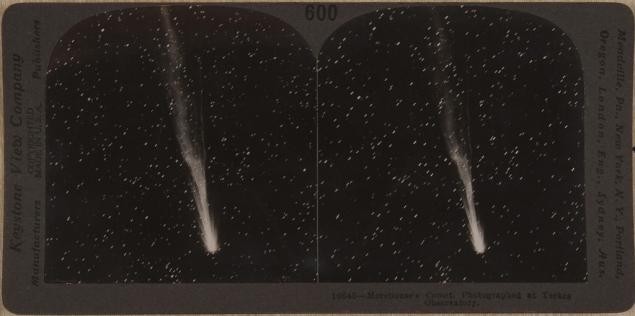
Photo comet Morehouse, Yerko Observatory, 1908
In our time, the comet not only learn with the help of astronomical instruments, these celestial bodies are sent to the spacecraft. Probes by people who visited the comet 19P / Borelli, comet 81P / Wild, Halley's comet, 26P / Grigg - Skellerupa, 21P / Giacobini - Zinner, 9P / Tempel, 103P / Hartley, 67P / Churyumov - Gerasimenko. In the last few years in particular actively covered the last mission, under Rosetta and Philae probe station. These two instruments, studied the comet Churyumov-Gerasimenko, the man gave a wealth of information about the structure and origin of these celestial bodies. Processing and analysis of the data is still going on.
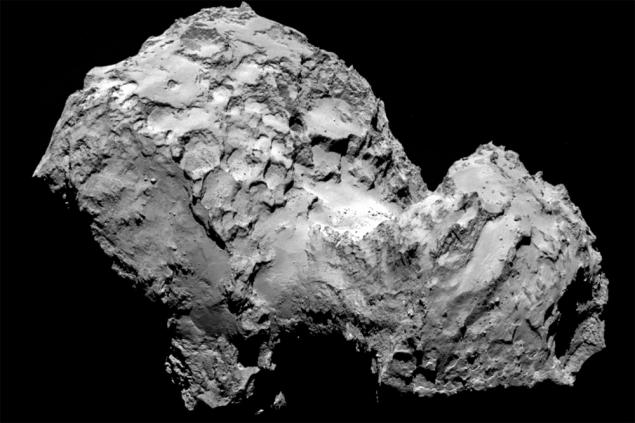
Photo of Comet Churyumov-Gerasimenko, Rosetta made station 2015
Source: geektimes.ru/post/278166/

comet and an earthquake in Istanbul (1556)
Since ancient times, people observed the sky and, of course, noticed the unusual bright objects that moved across the sky at high speed. Scholars of ancient Greece tried to find a logical explanation for what is happening. In the 4th century BC Greek scholar Aristotle thought that a comet - it is inflammation of the air. Such ignition occur due to non-uniformity of air surrounding our planet, causing flammable inclusion sometimes light up. According to him, he reigned perfect order and harmony in the sky. This sudden and accidental phenomenon, like a comet, could not be part of the sky. Aristotle believed the Milky Way and the product of heating the air stars.
This view was rejected by other ancient Greek scientists. The Pythagoreans believed that the comet - a kind of planets. Hippocrates of Chios claimed that the comet was initially no tail, it appears only after a long walk in space. But Seneca was already close to an understanding of what constitutes a comet. He wrote that the comets move in elliptical orbits, and see the comet can only be at the lowest point of this orbit. Seneca believed that some comets return with a period of about 70 years. "I can not accept that a comet - it is only lit the fire; rather, it is one of the eternal works of nature ... The comet has its own place between the heavenly bodies ... she describes his path and does not go out, but only removed. We will not be surprised that the laws of motion of comets is still not solved; the time will come when the hard work will reveal the hidden truth right now ... "- Seneca wrote
. There were also other opinions. Anaxagoras believed that the sun, moon and stars - it is off the ground rock. His opinion was confirmed while falling meteorites on the ground. In Northern Greece on the ground between the 468 th and 466 BC large meteorite fell (the size of a cart, in the description of eyewitnesses). It was a stony meteorite, which is considered proof of the point of view of Anaxagoras.
Ancient Greek scientists were virtually the only supporters of the description of comets and meteorites as a natural phenomenon for a long period of time. And before them, and after the cosmic bodies were considered mystical objects. Someone estimated the comet flyby, as a manifestation of the will of God, someone - a harbinger of future troubles. And because of the epidemic and the war at that time were of frequent occurrence, and the appearance of comets is associated with them.
In addition to Greek scholars of the movement of comets in the sky and watched the Chinese. They began observing a very long time. The first in the history of comets description is written evidence of the Chinese, established in 2296 BC Space Chinese scientists presented differently than the Greeks. According to the Chinese, the universe - a vast empire, whose head is the sun. Our world - is the emperor. Planets and bright stars - it's rulers, to give an indication of comets. Last played the role of couriers, scurrying around the space and passing the necessary posts. The Chinese believed comets positive phenomenon.
Later, the comet was seen as a harbinger of the death of kings and their heirs. For example, after the assassination of Julius Caesar bright comet appeared in the sky. Comets appeared in the time of death (or shortly before / after) Ivan the Terrible, Constantine the Great, Pope Urban IV. Comets brings real horror in many medieval rulers.
In medieval paintings, tapestries, murals, manuscripts and prints in the comet repeatedly portrayed. Some artists have depicted the comet very accurately, without any "axes, knives, swords dipped in blood." As an example, one of the first images of comets can lead tapestry Bains, the most famous work of the Norman conquest of England period (1066). Tapestry was created in 1070. Here you can see Halley's Comet depicted on the head of King Harold II. Comet then considered a harbinger of impending disaster. King probably had to go through many sleepless nights, as the comet appeared April 24, 1066, after only 4 months after his coronation.

Bayeux Tapestry. We see how people point to the comet
As for the Slavs, the first time information about comets appeared in "The Tale of Bygone Years". In Kievan Rus comet also considered Harbingers of different problems - war, pestilence, and other disasters. Interestingly, in ancient comet considered moving tailed stars. In the annals of the comet's description got in 1066. This celestial body wrote: "The great star; Star privelikim, lutse imushi aky bloody, with vskhodyaschi solnetsnom pm entry; star image kopiinyi; star ... ispuschayusche beam eyuzhe prozyvahu
blistannitsyu. "

Nuremberg Chronicles, 1493
They were afraid of comets and the common people. Thus, the French surgeon Ambroise Paré described the comet that appeared in 1528: "This comet was so horrible and terrible, and gave rise to great confusion among the people so that some die from fear alone, while others fell ill. It was a huge shining length and color of blood; in the top of it was visible clenched hand holding a long sword, as if ready to strike. At the end of his blade could be seen three stars. On both sides of the beam emerging from the tail of the comet could be seen a lot of axes, knives, swords dipped in blood, and among them were seen terrible human faces with beards and unkempt hair standing on end. »

Augsburger Wunderzeichenbuch, 1552.

appearance of a comet in 1577, Georgium Jacobum von Datschitz

Image Terrible comet, Les oeuvres d'Ambroise Paré, 1579
Famous medieval physician and alchemist Paracelsus concurrently claimed that comets are the messengers of angels announces death.

comet image of "Astronomie & amp; Komet ", 1580
But in the 16th century, scientists do comets. Tycho Brahe and some other astronomers realized that a comet - it is not atmospheric phenomenon and not the hand of god. In fact, comets are out of the atmosphere and much farther than the moon.

Detailed image of a comet, 1665
In the 80s of the 17th century, the comet began to study more carefully. The study of comets in recent history put Edmond Halley. He first set the frequency of occurrence of one of the comet that appeared in 1680, and calculated its orbit with the help of Newton.

Comet over Catalonia, 1704
After the first comet Halley made for calculating the orbits of 24 comets yet. These comets have been listed in the first catalog of the orbits of comets appeared in 1531, 1607 and 1682, respectively. After the scientist calculated the parameters of the orbits of comets, he found that there are similar characteristics of a comet, and decided that it was not three but one comet that appears at intervals of 75, 5 years. This heavenly body and was named Halley's comet. After Newton and Halley, as well as the work of other scientists, the comet ceased to be a mystery, and were the subject of the study of science.

Meteor rain in the night sky, 1783

Izobazhenie comet (Thomas Cornell, 1789)

J.J. Grandville's Un Autre Monde (1844)

The theory of tails of comets and forms created in the late XIX century Russian scientist Fyodor Bredikhin. He has developed and classification of comet tails, which is used in modern astronomy. Bredikhin proposed to refer the tails of comets to the main three types: straight and narrow, aimed directly from the sun; wide and slightly Curved, deviating from the Sun; short, strong uklonёnnye from the central luminary.
 Image
Image falling meteorite (Ukraine 1866)


Comet C / 1881 K1, 1881

Leonids 1833

Photo comet Morehouse, Yerko Observatory, 1908
In our time, the comet not only learn with the help of astronomical instruments, these celestial bodies are sent to the spacecraft. Probes by people who visited the comet 19P / Borelli, comet 81P / Wild, Halley's comet, 26P / Grigg - Skellerupa, 21P / Giacobini - Zinner, 9P / Tempel, 103P / Hartley, 67P / Churyumov - Gerasimenko. In the last few years in particular actively covered the last mission, under Rosetta and Philae probe station. These two instruments, studied the comet Churyumov-Gerasimenko, the man gave a wealth of information about the structure and origin of these celestial bodies. Processing and analysis of the data is still going on.

Photo of Comet Churyumov-Gerasimenko, Rosetta made station 2015
Source: geektimes.ru/post/278166/
How should I store eggs and dairy products. It turns out, all my life I was doing it wrong!
Summertime ...


